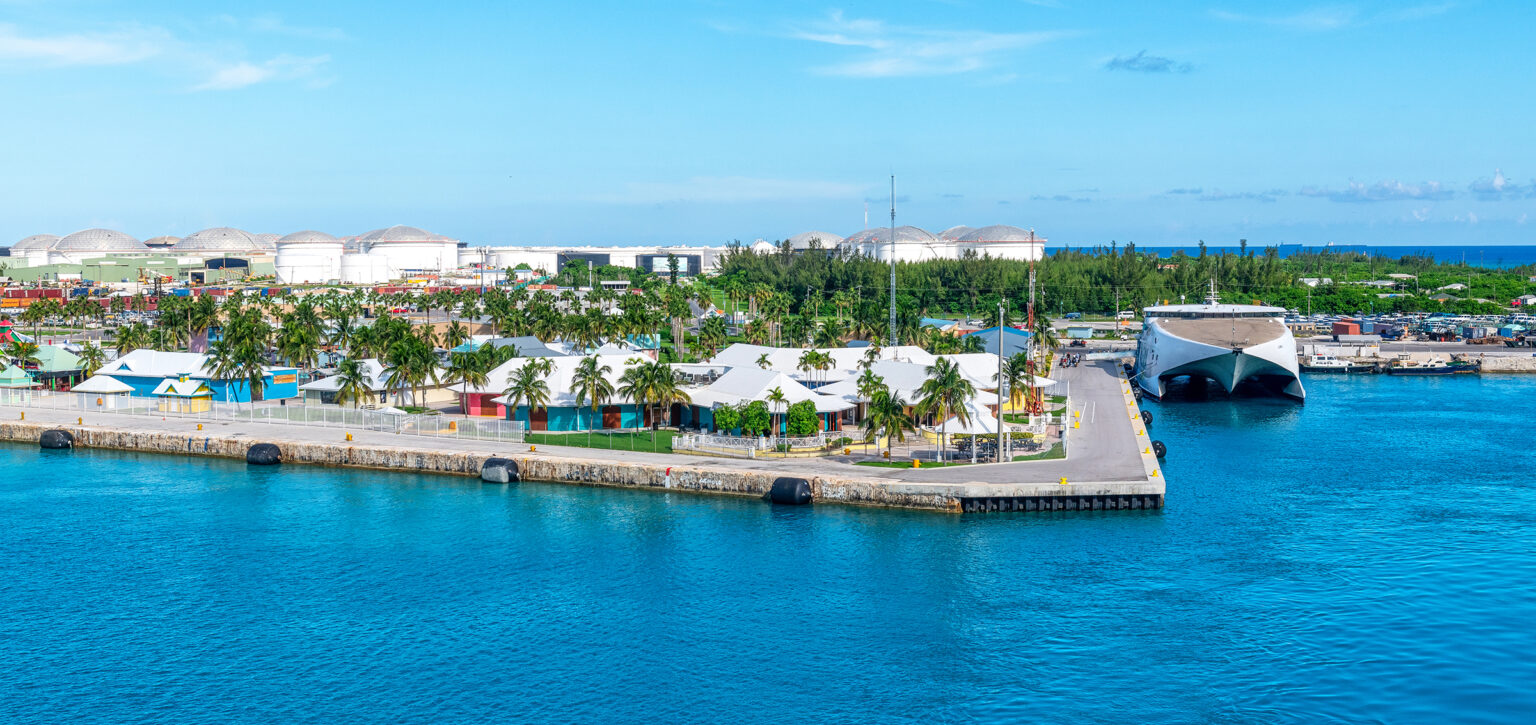The People’s Republic of China has invested in many ports in Latin America, including Freeport in the Bahamas.
JULIETA PELCASTRE/ DIÁLOGO AMERICAS
The number of Chinese-owned or operated ports worldwide has been steadily on the rise, according to a late 2022 study by the U.S.-based national security and defense think tank Center for a Secure Free Society (SFS).
The People’s Republic of China’s (PRC) foothold in some 40 ports in Latin America from Peru to Mexico, combined with 11 satellite ground stations in Argentina, Bolivia, Brazil and Venezuela, allows the country to have strategic locations in the Western Hemisphere, the SFS report indicates.
“China does not make random investments or choose geopolitical positions that aren’t aligned with its strategic objectives,” Daniel Pou, director of the Citizen Security Data Analysis Center of the Dominican Republic, told Diálogo.
Many of the Chinese state-owned companies involved in these development projects have ties to the Chinese People’s Liberation Army (PLA), the SFS report said. The PRC’s military force, in support of Chinese companies’ economic expansion, has been cautiously moving forward for a long time, Uruguay’s content website L21 reported.
Beijing’s port infrastructure projects are just pieces of its economic, political and military expansion strategy to “become the great global hoarder of raw materials, especially Latin American resources,” Pou said. “China’s logic is not to help develop countries that establish alliances with Beijing, but rather long-term strategies that facilitate the development of its expansion, because it’s an expansionist policy. Latin America is at the mercy of Chinese capital.”
One of the major ports moving forward is the Chancay Multipurpose Port Terminal in Peru. The mega-terminal is set to become an exchange and distribution hub in the region, with high volumes of goods transiting to and from the Pacific, but in principle it is designed to ship raw materials from Peruvian mining, Spanish magazine Cambio 16 reported.
This project, part of the One Belt, One Road initiative, will cause irreversible damage to the Santa Rosa wetlands, a key corridor of biodiversity in the central coast of Peru. It also will bring artisanal fishing in that area to an end, and is already affecting soil stability, causing coastal erosion and collapsing homes, BBC reported.
Two Chinese firms are also designing and building a fourth bridge over the Panama Canal, through which 5% of the world’s maritime trade transits, The Logistics World, an online directory of global logistics resources, reported. The project has been on hold since March 2020 and the Panamanian government is evaluating the funding structure.
The PLA has been seeking to establish a base in Panama since the PRC investment company Hutchison Whampoa won concessions to operate two ports there in 1999, and in El Salvador since plans for a megaproject in La Unión were announced in 2018, L21 reported.
Concerns that Beijing could use strategic ports to host Chinese warships increased when Uruguay’s General Assembly approved the implementation of joint defense efforts with China, the SFS report indicates.
The PRC has been building its navy up for decades to protect its interests worldwide. Chinese port terminals have commercial value but are also “triple use” in that they can serve for logistics support, intelligence gathering and as options for future military bases, Chilean news site Mundo Marítimo reported.
“[Chinese] investments in port and airport infrastructure, although civilian in nature, are marked with a stamp of military hegemony […], establishing limitations to the country’s authorities on the strategic projects developed,” Pou said.
An example is Djibouti, located at the entrance to the Red Sea and the Suez Canal, one of the world’s busiest shipping routes, Argentine financial site Más Inversiones reported. China built its first overseas military base there.
The Chinese naval base in the Horn of Africa is steadily increasing its capacity with as many as 2,000 military personnel with arms, munitions and armored combat vehicles, The Associated Press (AP) reported. China is also eager to put boots on the ground in ports in the Gulf of Guinea and Angola, AP reported.
Also of concern is Beijing’s increasing use of satellite ground stations in Latin America, SFS noted. Advancing China’s space program is a priority for its Chinese Communist Party General Secretary Xi Jinping, who seeks to make his country a space power, Reuters reported.
“China cajoles [Latin America] and welcomes places where there is little capital flowing […] to have a monopoly of certain maritime routes; and that, in itself, is an advantage in military strategic terms,” Pou concluded.
This story originally was published in Diálogo Americas, a publication of U.S. Southern Command.

